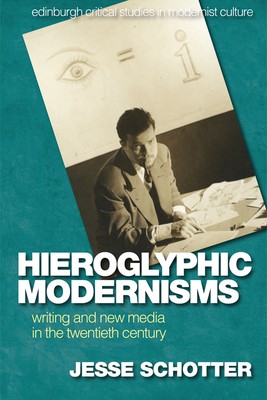
- We will send in 10–14 business days.
- Author: Jesse Schotter
- Publisher: Edinburgh University Press
- ISBN-10: 1474452434
- ISBN-13: 9781474452434
- Format: 15.5 x 22.9 x 1.5 cm, softcover
- Language: English
- SAVE -10% with code: EXTRA
Reviews
Description
Explores hieroglyphs as a metaphor for the relationship between new media and writing in British modernism
In the British Museum, one object attracts more tourists than any other: the Rosetta Stone. The decipherment of the Stone by Jean-François Champollion and the discovery of King Tutankhamun's tomb in 1922 contributed to creating a worldwide vogue for all things Egyptian. This fascination was shared by early-twentieth-century authors who invoked Egyptian writing to paint a more complicated picture of European interest in non-Western languages. Hieroglyphs can be found everywhere in modernist novels and in discussions of silent film, appearing at moments when writers and theorists seek to understand the similarities or differences between writing and new recording technologies. Hieroglyphic Modernisms explores this conjunction of hieroglyphs and modernist fiction and film, revealing how the challenge of new media spurred a fertile interplay among practitioners of old and new media forms. Showing how novelists and film theorists in the modernist period defined their respective media in relation to each other, the book shifts the focus in modernism from China, poetry, and the avant-garde to Egypt, narrative, and film.
Key Features:
- Argues for the connections among discourses about film, phonography, digital media, and literature in the twentieth century through the recurrent invocations of hieroglyphs
- Shows how novelists and film theorists in the modernist period defined their respective media in relation to each other
- Shifts the focus in accounts of visual languages in modernism from China, poetry, and the avant-garde to Egypt, narrative, and film
- Establishes a dialogue between Egyptian writers of the 1920s and 30s and canonical British modernists
EXTRA 10 % discount with code: EXTRA
The promotion ends in 11d.17:30:28
The discount code is valid when purchasing from 10 €. Discounts do not stack.
- Author: Jesse Schotter
- Publisher: Edinburgh University Press
- ISBN-10: 1474452434
- ISBN-13: 9781474452434
- Format: 15.5 x 22.9 x 1.5 cm, softcover
- Language: English English
Explores hieroglyphs as a metaphor for the relationship between new media and writing in British modernism
In the British Museum, one object attracts more tourists than any other: the Rosetta Stone. The decipherment of the Stone by Jean-François Champollion and the discovery of King Tutankhamun's tomb in 1922 contributed to creating a worldwide vogue for all things Egyptian. This fascination was shared by early-twentieth-century authors who invoked Egyptian writing to paint a more complicated picture of European interest in non-Western languages. Hieroglyphs can be found everywhere in modernist novels and in discussions of silent film, appearing at moments when writers and theorists seek to understand the similarities or differences between writing and new recording technologies. Hieroglyphic Modernisms explores this conjunction of hieroglyphs and modernist fiction and film, revealing how the challenge of new media spurred a fertile interplay among practitioners of old and new media forms. Showing how novelists and film theorists in the modernist period defined their respective media in relation to each other, the book shifts the focus in modernism from China, poetry, and the avant-garde to Egypt, narrative, and film.
Key Features:
- Argues for the connections among discourses about film, phonography, digital media, and literature in the twentieth century through the recurrent invocations of hieroglyphs
- Shows how novelists and film theorists in the modernist period defined their respective media in relation to each other
- Shifts the focus in accounts of visual languages in modernism from China, poetry, and the avant-garde to Egypt, narrative, and film
- Establishes a dialogue between Egyptian writers of the 1920s and 30s and canonical British modernists


Reviews